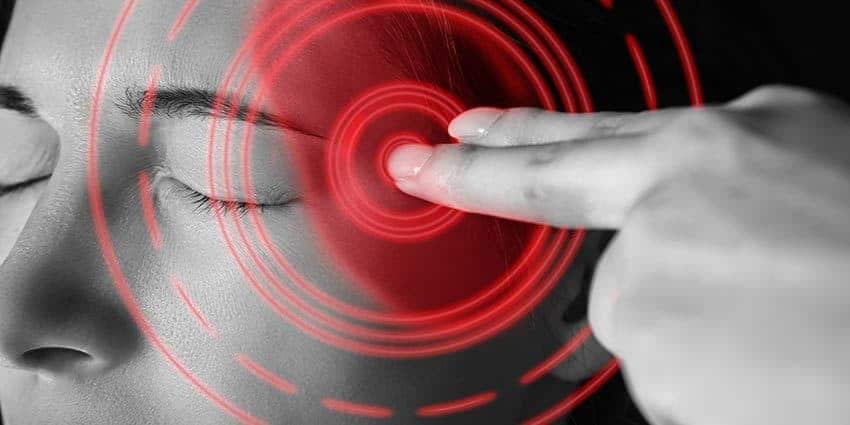 Migraines are more severe than common headaches. These happenings induce draining pain and the body becomes overloaded causing it all but impossible for somebody to continue functioning normally. Due to this effect, making someone feel and look miserable.
Migraines are more severe than common headaches. These happenings induce draining pain and the body becomes overloaded causing it all but impossible for somebody to continue functioning normally. Due to this effect, making someone feel and look miserable.
Here we will look at what are migraines are and the common symptoms. We will also discuss how they are different from cluster headaches and additionally list out the common triggers of a migraine. Finally, we will look at possible things to do to get rid of the pain from a migraine episode so that the person can go back to normal life living.
What Are Migraines?
A migraine is seen as a genetic, neurological disorder that affects the brain. For those experiencing migraines, their autonomic nervous system responds unsuitably to stressors, distorting circulation of blood within the brain. As the body system tries to recover, over-dilation occurs with the arteries in the brain as the body attempt to reverse the process. As blood flow passes through the arteries, it induces pain receptors along the way, causing throbbing pain in the head.
Headaches from a migraine give rise to acute and sometimes long-lived pain behind one ear or eye, including the temples. Other common migraine symptoms include vomiting or nausea, sensitivity to mild and intense light, and at times vision loss or difficulty speaking.
A migraine not untreated can linger for several hours to 3 days and in some individual cases up to several months. People who are suffering from the worst form of migraines; the pain has a great implication on their lifestyle, prevent them from working, and subject them to spend most times in quiet, dark rooms.
According to scientists findings, about 12percent of the population of American suffer from migraine headaches and is more common among women. They also forecast that up to 30 percent of all women will suffer a migraine during their lifetimes.
Symptoms of a Migraine
Migraines are not just a terrible single episode. Instead, they manifest as a sequence of turbulent and terrible commotion that can stay for days before resulting in the main headaches and can last up to 72 hours.
A day or more before a migraine episode start, some individuals feel symptoms that signal an upcoming attack. The symptoms include unusual food cravings, irritability, hyperactivity, and depression.
After this happening, the main migraine may follow with the “aura” a term used to refer to a form of sensory experiences. For steady migraine sufferers, the aura can actually be used to prognostic the start of the headaches up to thirty minutes ahead. During the aura period, an individual is likely to be unable to think correctly and focus on jobs. They may suffer visual stimuli such as a heightened sensitivity to light, taste, or touch to the point where any form of sensory input can be enormously uneasy. They may also have numbness or tingling in the face or extremities.
Whether a migraine comes with warning signs or not, once it happens, the pain can be serious. They are known for pounding pain around and above the eyes usually focused on one side of one’s head. More so, those having migraines frequently complain about themselves being sensitive to smells, light, and sound. Most individuals with this ailment do experience feeling of being lightheaded, nauseous, and vomiting.
How are migraines different from cluster headaches?
Migraines and cluster headaches are both enfeebling headaches and many people mistake one for the other. Different from a migraine episode, cluster headaches suddenly occur, without prior auras or warning signs. Symptoms of cluster headaches include watery eyes, runny nose, and pain generally one side. In spite of the symptoms, cluster headaches are dissimilar from sinus headaches
Even though both women and men can get any of the two headaches, cluster headaches are more common in men while migraine episodes are more common in women.
Common Migraine Triggers
Scientists are yet to understand the real cause of migraines or why some individuals get them and others don’t. Studies suggest that migraines could be genetic. But one thing most medical experts conclude, certain triggering actions and food can induce a migraine while specific triggers differ from one person to the other.
Those having migraine issues should keep a diary to enable them to detect the succession of their migraine sequences. This information gathered can identify which of the food, environmental factors, or behaviors trigger their migraine succession. Preventing these triggers can limit the onset of a migraine episode.
A common trigger of a migraine in many women is estrogen levels in their body. For some women, taking oral contraceptive may help reduce or get rid of migraines, for other women it may increase their pain frequency.
Other common Migraine triggers include:
- Certain activities: long durations in front of a television, video game, or computer, skipping meals, motion sickness, anything that is very mentally, or physically stressful.
- Sensory stimuli: flickering or bright lights, violable odors like perfume, solvent, or paint.
- The condition of the environment: low fronts pressure, dust or pollution in the air, severe weather, humidity, extremely dry air high heat, altitude changes.
- Certain foods: chocolate (probably due to caffeine presence), foods containing high quantity of tyramine such as processed meat, aged cheese, olives, pickles, nut and soya beans, cultured dairy, salty food, and processed foods containing wheat.
- Food supplements and additives: sugar substitutes (like of aspartame), yellow dye no. 6, monosodium glutamate (also known as MSG), cellulose used in some medications and vegan capsules, melatonin, nitrates, and nitrites.
- Beverages: beer, wine, whiskey, and champagne, and caffeinated beverages (such as coffee, tea, and soda).
- Medications: oral contraceptives and vasodilators, also note that the content of the tablets or capsules themselves can cause migraines in some people sensitive to the cellulose.
- Sleep stress and deprivation (which may be connected to release of high levels of cortisol)
Disclaimer: The statements on this site have not been evaluated by the FDA. Any products mentioned are not intended to diagnose, treat, cure, or prevent any disease. The information provided is for general informational purposes and is based on the opinions and research of the contributors. Please consult your doctor prior to pursuing any course of treatment.
How to Get Relief from a Migraine?
 Migraines are a discomforting health disorder. During migraine episodes, everything becomes suspended. While the episode is on, it practically becomes not possible to do daily work, caring for your children, run errands, drive, or other home tasks.
Migraines are a discomforting health disorder. During migraine episodes, everything becomes suspended. While the episode is on, it practically becomes not possible to do daily work, caring for your children, run errands, drive, or other home tasks.
There are steps that people facing migraine challenges can do to eliminate or get rid of the symptoms. Most victims will take over-the-counter pain relief medication and pull back into a quiet, dark room. Other methods can help reduce symptoms of migraines (although may or not be sufficient to completely alleviate the pain).
- Ice pack or cold wet cloth over the eyes
- Taking a nap
- Taking hot baths or hot showers
- Vitamins, including Riboflavin, B12, Coenzyme Q10, and Magnesium
- Drinking feverfew tea
- Hydrating with water or sports drinks
- Sinus medications
- Use over-the-counter prescribed medications (ibuprofen, Tylenol, aspirin)
Alternatives to Pharmaceutical Medications
 While some migraines sufferers go for medical treatment, remember over the counter medications do have some unwanted side effects. Some drugs that have been proven to treat migraine attacks are pretty heavy-hitting. Some of them include antidepressants, cardiovascular drugs, and anti-seizure medication.
While some migraines sufferers go for medical treatment, remember over the counter medications do have some unwanted side effects. Some drugs that have been proven to treat migraine attacks are pretty heavy-hitting. Some of them include antidepressants, cardiovascular drugs, and anti-seizure medication.
For those who are looking for alternatives to these kinds of medicines, there are some options to consider:
Green light therapy:
Research done at Beth Israel Deaconess Medical Center in Boston are finding promising outcomes when migraine sufferers are exposed to certain wavelengths of green light.
Botox treatments (OnabotulinumtoxinA):
Injecting Boxton injections into the head and neck of some migraine sufferers can help to relieve them for up to 3 months at a time.
Acupuncture
Preventive acupuncture can help some migraine sufferers to ease muscle tension, especially around the shoulders and head. During migraine succession, acupuncture pain relief may also be effectual, especially when avoiding the area around the neck, head and the upper body.
Environmental controls:
If smoke or dust is one of your triggers for migraines, purchasing filters for your HVAC system, as well as a stand-alone air filtration unit will help to lessen the flow of particles in the air.
Buying a humidifier machine can be of assistance for people who develop migraines in dry air.
Blackout curtains and white noise units or sleep masks can help individual facing difficulty sleeping. It is also worth trying different types of light bulbs in your house or work offices, as the flicker of light bulbs, especially fluorescent tubes, can trigger migraines in some people.
Prevention is The Key
While doctors are yet to give a conclusive cure for migraines, this means for those who get migraines, it is important to identify and avoid personal triggers of migraines as well as also knowing the signs that a migraine is coming. By staying away from trigger behavior and foods, avoiding extreme physical or mental fatigue as possible, and having adequate sleep up to 7-8 hours, most migraines victims, can handle their problem and will not need to resort to medical prescription.
But for those who still experience migraines, there are medications, plus other promising alternatives, which can help most migraine sufferers live normal lives.

